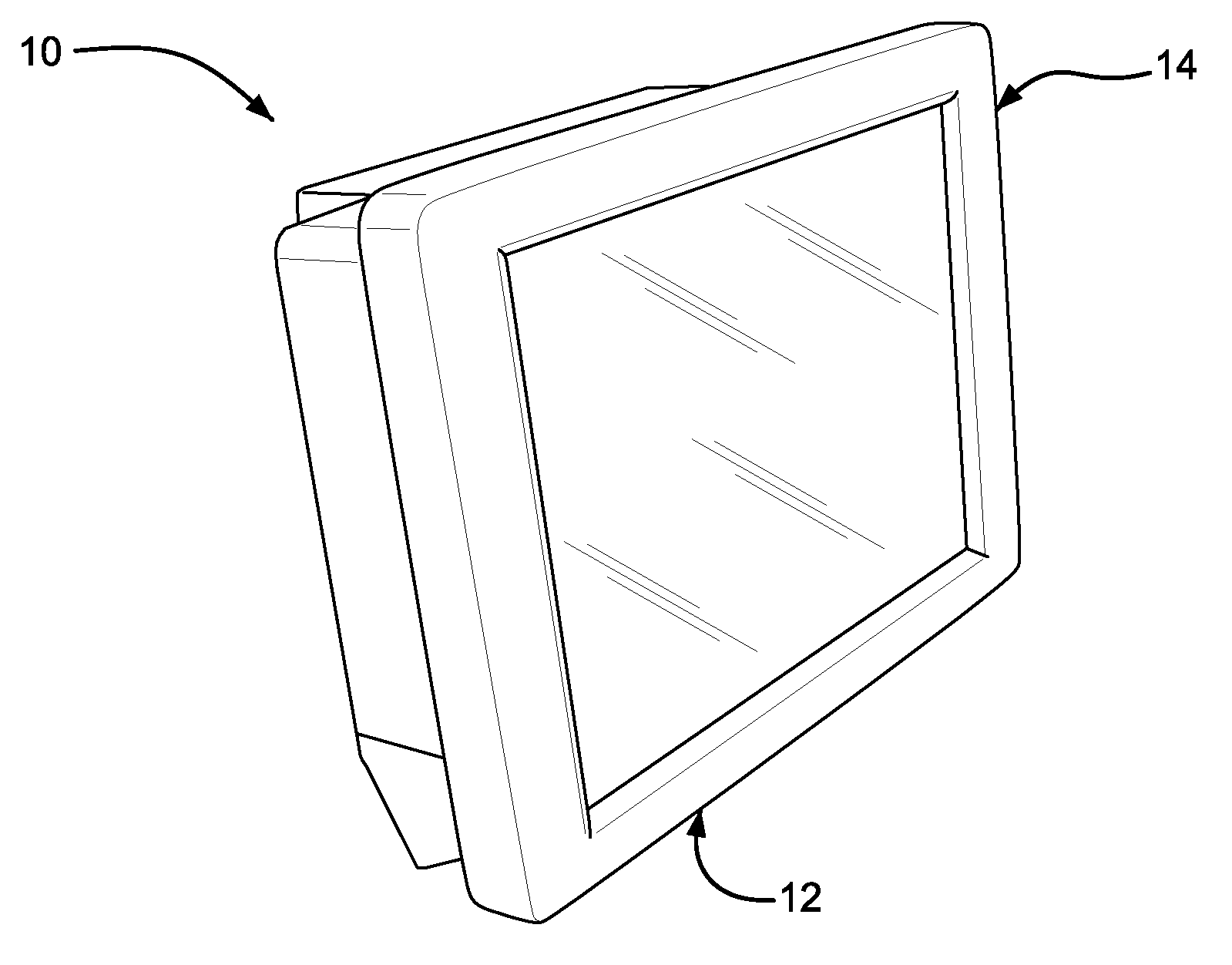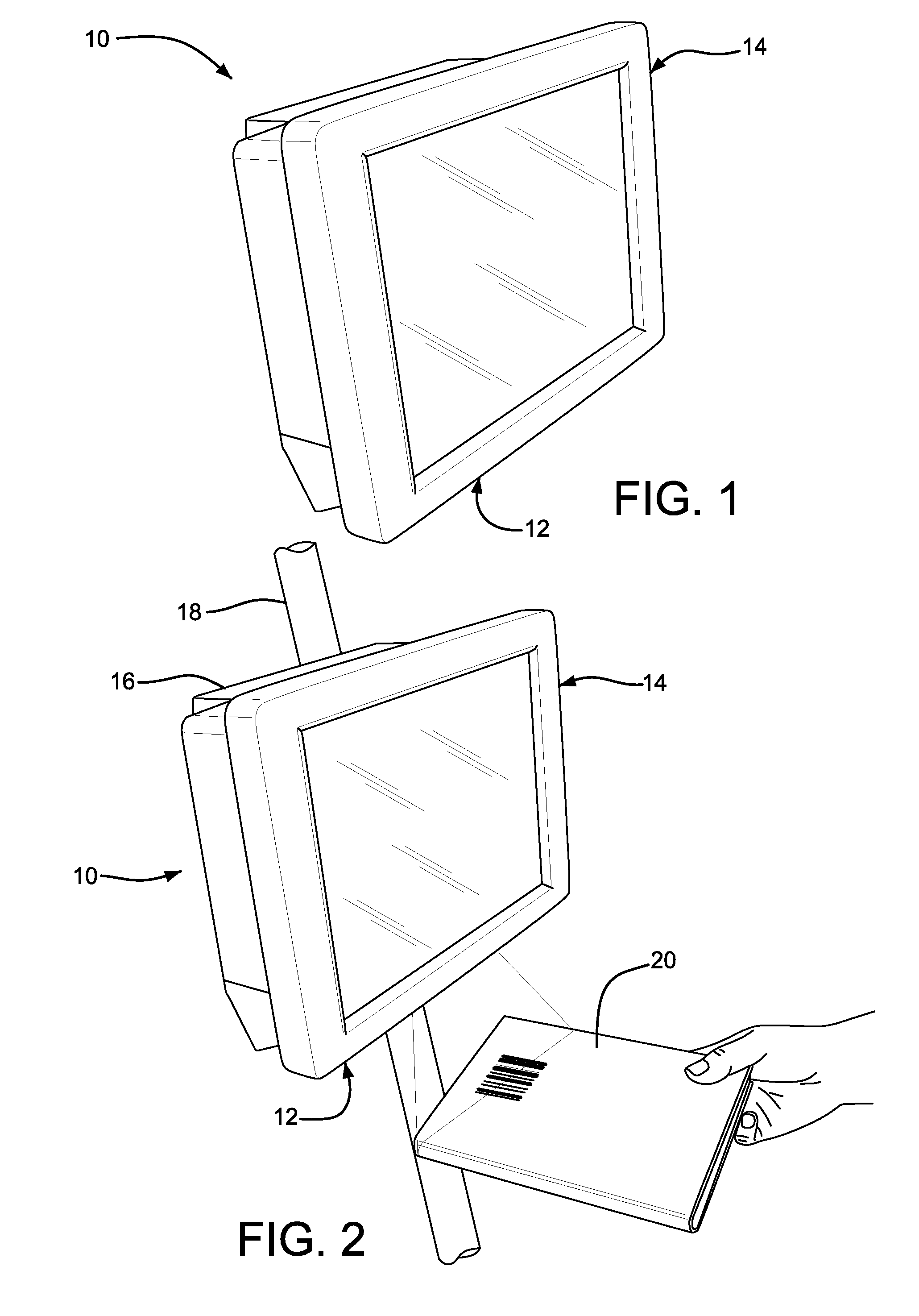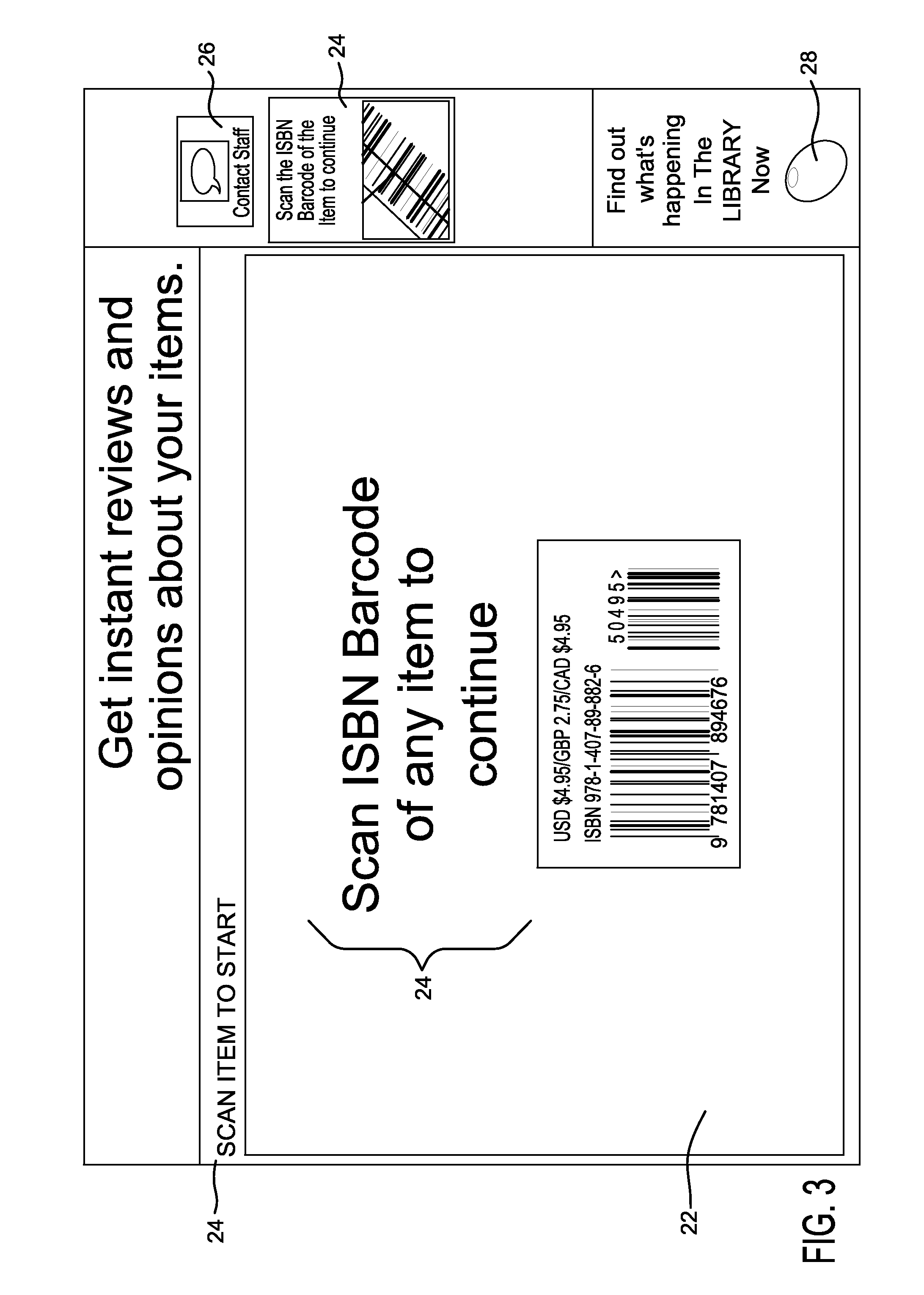Item assessment system
a technology for items and items, applied in the field of items assessment systems, can solve the problems of limiting the knowledge of the library staff of the topic, not providing an objective critical view of the content and/or validity of the item, and also requiring an opinion
- Summary
- Abstract
- Description
- Claims
- Application Information
AI Technical Summary
Benefits of technology
Problems solved by technology
Method used
Image
Examples
Embodiment Construction
[0058]Referring to the drawings wherein like or similar references indicate like or similar elements throughout the several views, there is shown in FIGS. 1 and 2 an item assessment system according to the present invention identified generally by reference numeral 10. System 10 preferably includes an item code scanning means 12 and an interactive graphical user interface means 14 in communication with the scanning means. Although not required, in the interest of economy of space, it is preferred the scanning means 12 be contiguous or integral with graphical user interface means 14. While shown on the bottom of graphical user interface means 14, it will be understood that scanning means 12 may be located along the top, either side or back of means 14 if such is desired or necessary. Alternatively, scanning means 12 may be a wand or similar hand-held scanning device known in the art which may be wired or wirelessly connected to graphical user interface means 14. As is known, scanning...
PUM
 Login to View More
Login to View More Abstract
Description
Claims
Application Information
 Login to View More
Login to View More - R&D
- Intellectual Property
- Life Sciences
- Materials
- Tech Scout
- Unparalleled Data Quality
- Higher Quality Content
- 60% Fewer Hallucinations
Browse by: Latest US Patents, China's latest patents, Technical Efficacy Thesaurus, Application Domain, Technology Topic, Popular Technical Reports.
© 2025 PatSnap. All rights reserved.Legal|Privacy policy|Modern Slavery Act Transparency Statement|Sitemap|About US| Contact US: help@patsnap.com



